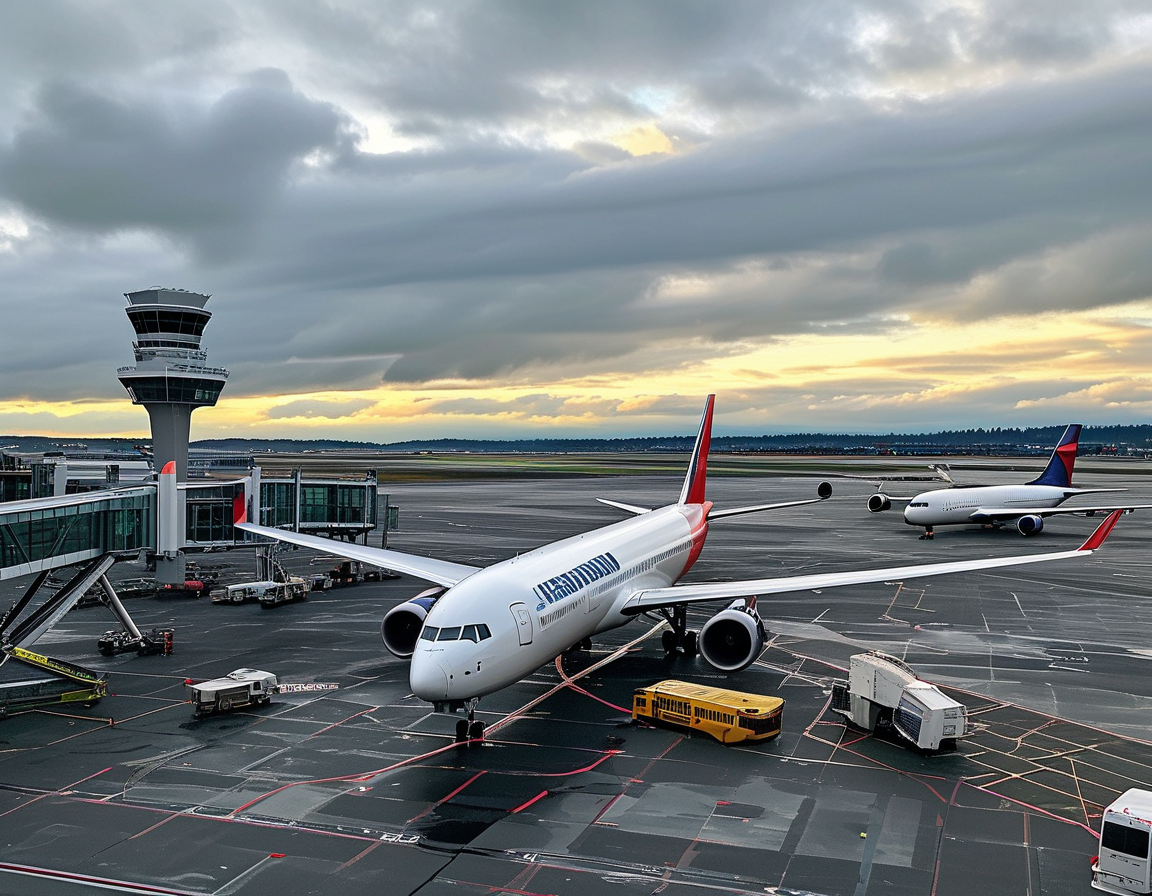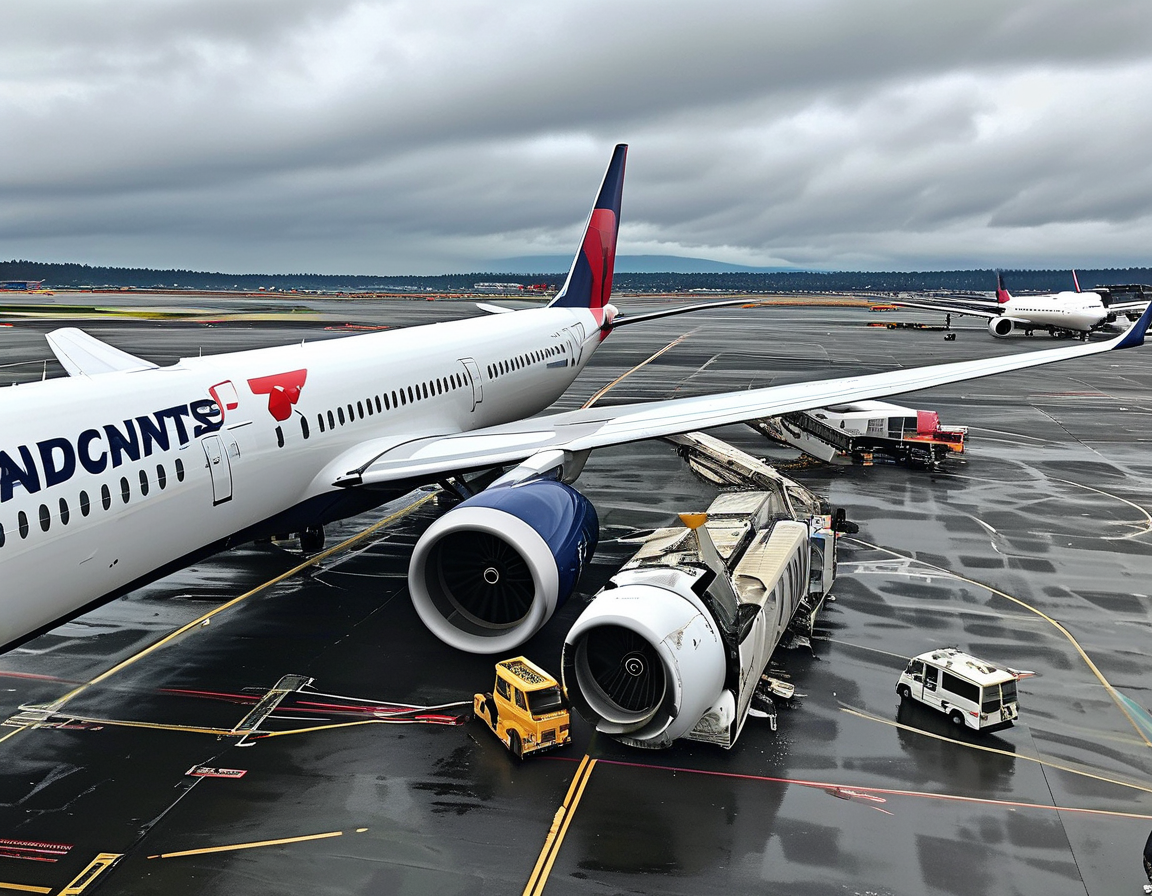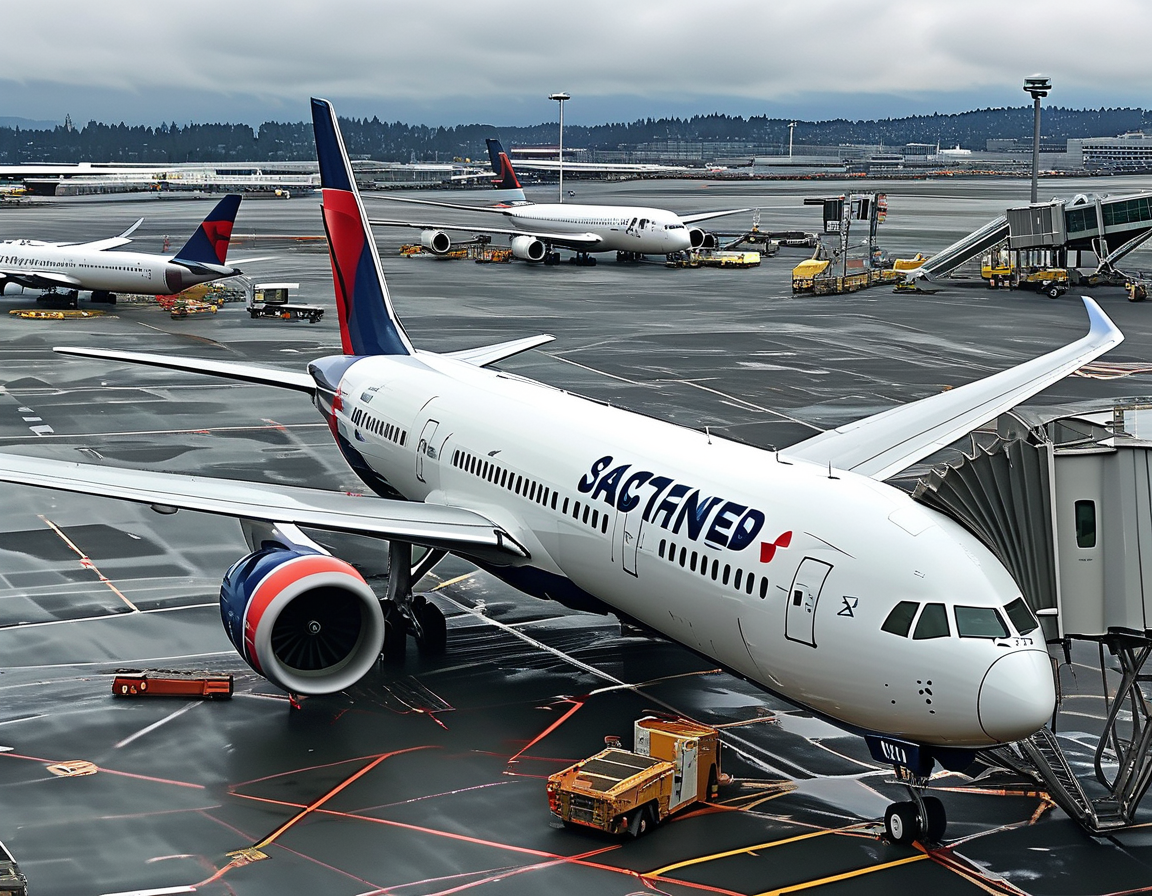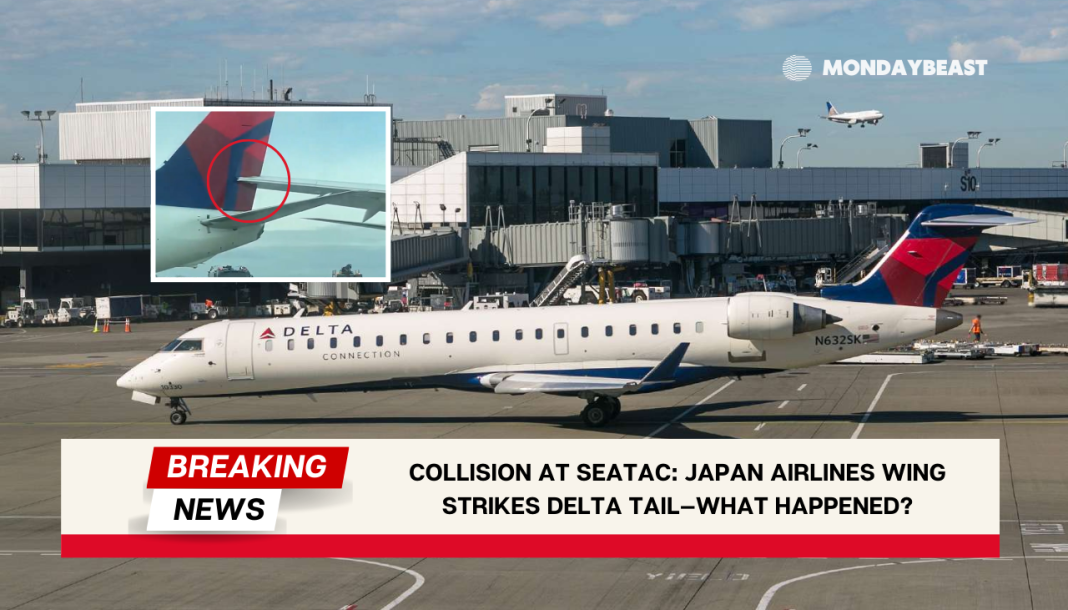Overview of the Incident
On a seemingly ordinary Wednesday, the unexpected happened at Seattle–Tacoma International Airport. Japan Airlines Flight 68 collided with Delta Air Lines Flight 1921 on the tarmac. This collision, while mostly harmless, shook many people’s sense of airport safety.
A Japan Airlines plane, recently arrived from Tokyo, was taxiing around 10:17 a.m. when its right wing struck the tail of a parked Delta flight. The striking image of the wing piercing into Delta’s tail was captured in video footage and circulated quickly. Many wondered how an incident like this could take place at such a busy airport.

By now, you might be asking: How serious was this? Thankfully, there were no injuries reported among the crew and passengers onboard. Both airlines urgently updated their passengers, apologizing for any confusion and delays.
First Reactions from the Airlines
Delta Air Lines issued a prompt statement about the incident, emphasizing that both flights were moving cautiously. The airlines normally maintain high standards for safety, so what went wrong? Just an unfortunate moment in a complex environment, right?
Flight 1921 was scheduled for Puerto Vallarta, carrying 142 passengers. Sodium levels of anxiety rose when videos emerged of the collision. Air travel is, after all, a calculated risk. Yet, the initial reports emphasized that the event had dire outcomes. The FAA assured that no severe repercussions followed. It’s easy to focus entirely on the chaos, but let’s pause to appreciate the airlines’ swift responses.
Airport Response and Recovery

The Port of Seattle quickly modernized its operations team and responded to the incident. First responders arrived to evaluate the scene. Just moments after the collision, flights experienced a temporary pause. Concerns loomed for travelers navigating the bustling airport. Thankfully, operations resumed with minimal impact.
The airport updated passengers about deplaning procedures swiftly. This reassurance played an essential role in keeping anxiety levels in check. Imagine being a passenger in that situation, keen on getting to your destination but dealing with an unexpected delay.
Community Reactions and Safety Concerns
In the wake of the incident, community discussions ignited. Aviation safety is a delicate balance between demand and human errors. Many passengers pondered: “Could it happen again?” Given recent high-profile aviation incidents, the worries escalated. The Philadelphia crash left seven dead, and the chaotic D.C. midair encounter raised alarms for travelers everywhere.

This collision at SeaTac surfaces critical questions about airport safety. Safety measures can only be as strong as their weakest link. Aviation experts offer insights into these incidents and remind us that most encounters are rare and unlikely to occur again. But the fear remains, leaving passengers anxious each time they board a flight.
The Broader Implications for Air Travel
With regards to air safety, many factors come into play. As travelers, we often trust that everything will proceed smoothly, but incidents like this serve as cautionary tales. They prompt airlines, FAA, and airports to improve safety protocols continually. And honestly, who wouldn’t want that?
In conclusion, while this incident at SeaTac was concerning, it also emphasizes the resilience of airlines and airport operations amid chaos. As travel becomes increasingly accessible, so too must our collective awareness of safety. Perhaps, we can learn something new each time we buckle our seatbelts for take-off.




